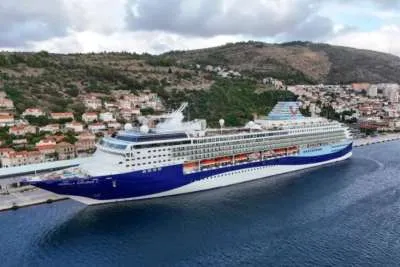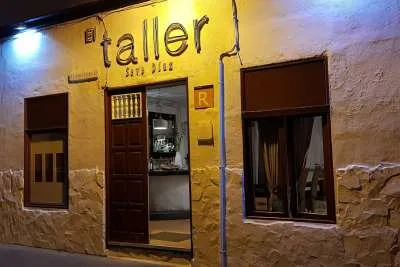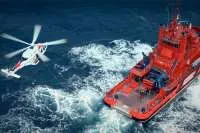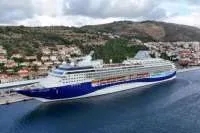5 tips for planning a Caribbean Cruise taking a baby on board
- 20-12-2024
- Travel
- collaborative post
- Photo Credit: Unsplash
Who would forego the chance to experience multiple beautiful islands, crystal-clear waters, and diverse cultures within a single trip? This is exactly what the Caribbean cruising experience offers and the reason why it is wildly popular.
People from all age groups step on board, even little guests who may not even know how to walk yet. It was expected that over 37.5 million people would embark on a cruising journey by the end of 2024. Caribbean cruise ships welcome infants with open arms, albeit with some special rules.
If you're planning to go cruising with your little one, it's time to prepare for a once-in-a-lifetime experience. Certainly, some major adjustments will be needed to enjoy a comfortable trip. In this article, we will discuss five tips to plan a successful Caribbean cruise with an infant.
CHOOSE THE RIGHT CRUISE FOR YOUR FAMILY
You need to start with clear expectations as to what your chosen cruise will offer. The truth is even among Caribbean cruises that allow babies, each may provide a different set of perks.
For instance, some have a baby drop-off centre for the age groups between 6 months and 2 years old. Others offer a play area where parents can enjoy along with their little ones. Some others even have a dedicated splash area for our little swimmers.
In contrast to these facilities, some cruises do not offer any. This does not automatically mean that you must choose the cruise line with the longest list of facilities. Sometimes, those offering minimal infant perks are the most fun to cruise in.
The main point is to select a cruise ship based on your needs. Suppose you’re excited to attend a few romantic dinners with your partner to spend quality time with them. It would be greatly disappointing for the travel day to arrive just to discover that your cruise does not have an infant centre.
Spare yourself such “oh no” moments and do the needful. Understand which facilities are the most important to you and set clear expectations for your journey. The right foot forward is to begin with the right cruise ship for your family.
HAVE A PLAN FOR FEEDING YOUR BABY
With a baby on board, this is one aspect you simply cannot take lightly. From the get-go, have a baby feeding plan in place. It may even affect your choice of cruise ship.
Will you be breastfeeding throughout your journey? Will you bring along breast milk in bottles, or will you carry powdered formula to make on the go? Each will require certain considerations.
For instance, USA Today shares that breastfeeding is welcomed across most cruise ships. By that we mean, you can do it in public or private spaces without the need to cover yourself.
As for milk stored in bottles, you may find a medical fridge in your cabin. However, a lot of them do not stay cold enough for breast milk. Do not bring along frozen milk as it generally has a shorter expiry date, once thawed, compared to refrigerated milk.
Perhaps you can pump fresh daily before the day starts so your baby can get their nourishment on time. As for the formula, we would recommend avoiding it altogether.
Dangers of Baby Formula
We understand that most parents feed their infants with baby formula as a breastmilk alternative. It does make sense if one cannot breastfeed or even pump breastmilk for valid reasons.
However, baby formulas like Similac and Enfamil have received much public criticism. TorHoerman Law shares that parents have alleged their babies developed a serious gastrointestinal condition called Necrotizing Enterocolitis or NEC.
In this condition, the baby’s intestinal wall becomes inflamed and dies, thereby causing a perforation. This can lead to a deadly infection since bacteria can now freely enter the abdominal cavity.
Given the fact that hundreds of babies have been injured, this issue has made its way into the Federal court. The Similac and Enfamil lawsuit currently has over 600 case filings. There is currently no definitive date for settlements but the same is expected to happen soon.
In light of this concern, it's best to carry along donor milk from a reputed milk bank if possible. Since many cruise ships do not have provisions for freezing infant milk, you can make use of ice cubes.
Bring along large zip lock bags, put in the ice cubes, and then store the bottled milk in them. These should stay good for a day or two. Keep in mind that you may need to contact a local milk bank across port cities to have steady access to donor milk.
Otherwise, you can take up combination feeding until the cruise is over. That would include alternating between donor milk and formula. A third option is to inquire about bringing along a portable battery-powered freezer that may keep the donor milk last longer. Make a decision that works best for you and your baby.
CHOOSE YOUR ROOM WISELY
A peaceful and relaxed cruising experience, especially with an infant onboard, also depends on where your room is located. A room that ends up being right under the dining room galley or buffet area may not be the best choice.
The room may permit unwanted noise, particularly during the early morning or late-night hours. According to the American Academy of Paediatrics, loud noise hurts children’s auditory senses in general. As for infants, their hearing can be disturbed by even slight sounds.
This is because their auditory system is still developing. Excessively loud or sudden noises tend to create a stress response in an infant’s body. This may lead to changes in oxygen levels, increased heart rate, and respiratory distress.
So, choose a room where the chances of loud and sudden noises are low. Moreover, try getting one with balcony space even if it costs a bit more. The balcony would be a good spot to enjoy some alone time when your little one is napping. If possible, you can even jump up to a suite that typically comes with a separate bedroom.
A pro tip is to avoid rooms toward the top or front of the ship as well due to the fog horn. If the weather gets a little murky, the horn will go off every three minutes. You may need a sound machine as one of your essentials but we will come to that in the next point. Room location may seem insignificant but it does make a huge difference.
BRING ALL BABY ESSENTIALS ALONG
This is a no-brainer but needs to be emphasized. Baby essentials while travelling or cruising can vastly vary. However, some aspects of it are universal.
A perpetual question among parents is how a baby can need so much stuff, but that is the truth. Packing right can make or break your cruise experience. So, make sure you have all the essentials in place. Here's a detailed list for reference -
- First aid kit and medication
- A sound machine to block out noises
- Baby carrier
- Travel stroller
- Twice the number of wipes or diapers you think you may need
- Cabin organiser
- Portable charging pad
- Toys
- Nursing and feeding supplies
- Blackout cover for the travel cot
- Inflatable bathtub
- Nursing clothes
This list can differ based on your baby’s needs. Feel free to add, subtract, or modify for a comfortable cruising experience. The main point is to not step on board until you’ve ensured all the necessary items are with you.
FLY IN A DAY BEFORE
This important rule is applicable even if you are cruising by yourself. It only becomes more important when a baby is to go on board. Let's understand a scenario that commonly occurs.
Suppose a parent puts all of their baby's feeding supplies in the checked luggage. First of all, never do that; instead, split the supplies between your carry-on and checked baggage. Flying in a day in advance will give you time to go get whatever didn't show up with the luggage.
Secondly, a day in advance will offer your little one napping time before boarding. Sleep can be pretty elusive for our babies. Cramming in too many activities in a single day can make it more challenging.
FREQUENTLY ASKED QUESTIONS (FAQS)
How Old Does a Baby Have to Be to Go on a Cruise?
Typically, a baby must be at least six months old to travel on a Caribbean cruise. However, Trans-Atlantic voyages call for babies who are 12 months old or older.
How Many Diapers to Pack?
The thumb rule for travelling with babies is to pack twice as many diapers as you think you may need. A Caribbean cruise should be no different. Depending on their age, babies can go through 5 to 10 nappies in a day. By that math, you may need to pack around 70 to 130 nappies for a 10-day trip. Check with your cruise if they offer nappies because not all of them do.
Do Babies Feel Seasick?
It is not impossible for babies to develop seasickness but is unlikely. According to the Mayo Clinic, motion sickness does not affect most infants and toddlers. Cruise ships have stabilisers to reduce the rolling motion of waves. Your little one may feel a bit off on days the sea is rough but even that should not be anything to worry about.
Will Babysitting Services be Available?
In-cabin babysitting services are no longer available on cruise ships, the Caribbean ones included. However, some do offer infant drop-off nursery services. Most of these will be provided in the morning or early evening.
We hope this article has only increased the anticipation of fun and memories with your baby. When you’re well-informed and prepared, all you need to think about are show-stopping entertainment, lip-smacking cuisine, and family-focused enjoyment.
Other articles that may interest you...
Trending
Most Read Articles
1.
2.
Featured Videos
A Vision of Elvis Tenerife Promo
- 10-05-2025
TEAs 2025 Highlights
- 17-11-2025



























































